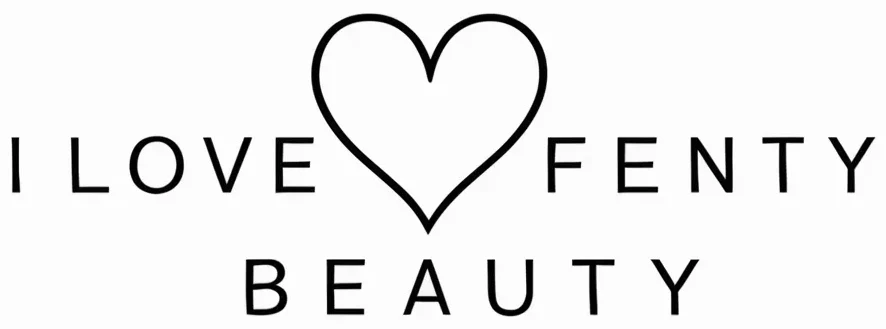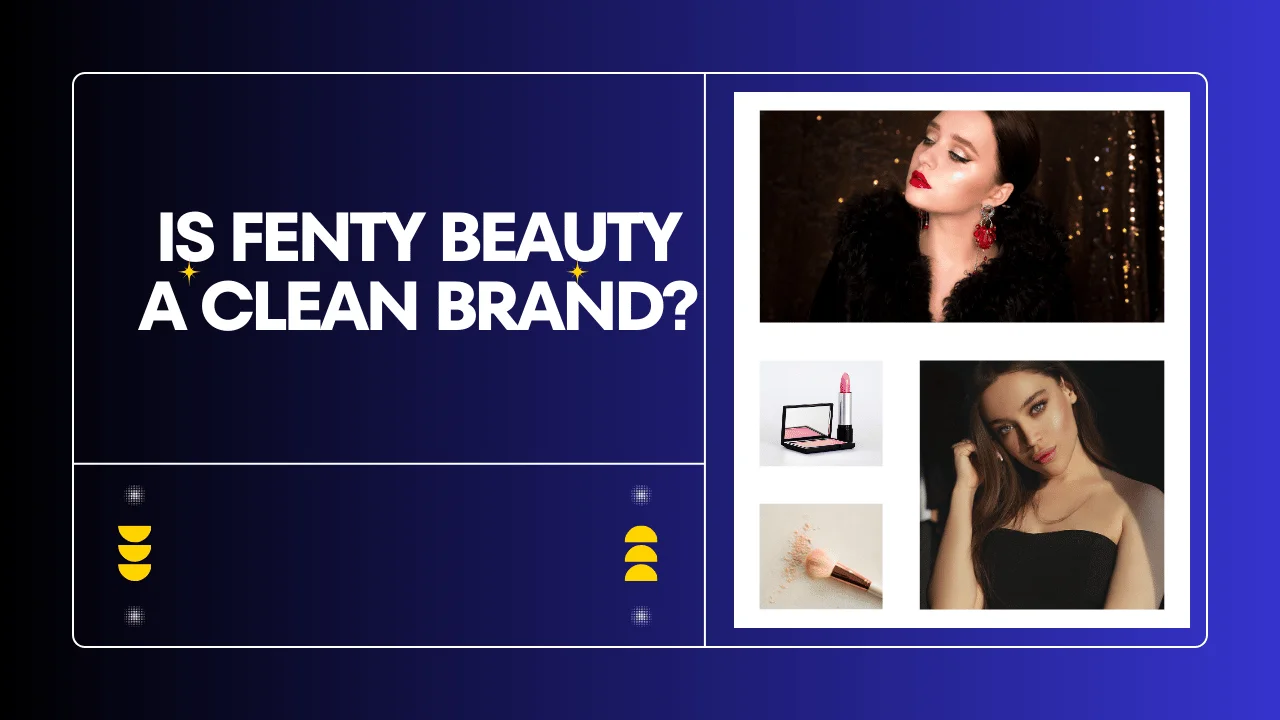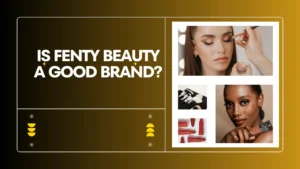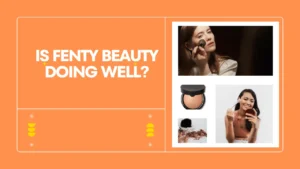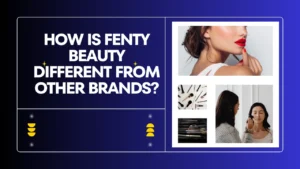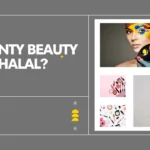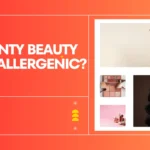You’ve seen Rihanna rocking a flawless Fenty Beauty beat on countless magazine covers and social media feeds.
Her inclusive shade ranges and innovative formulas have revolutionized the beauty industry. But amidst the hype, a crucial question lingers: Is Fenty Beauty a clean beauty brand?
For many makeup enthusiasts, clean beauty is no longer a niche trend, it’s a top priority. We’re increasingly concerned about the ingredients we slather on our faces daily. Are they safe for our skin? Do they align with our values for sustainability and ethical sourcing?
In this blog post, we’ll delve deep into the captivating world of Fenty Beauty, dissecting its ingredients, production practices, and consumer feedback.
We’ll crack the code on whether this iconic brand aligns with the core principles of clean beauty, empowering you to make informed choices about the products you use. Buckle up, beauty detectives – it’s time to uncover the truth behind Fenty Beauty’s dazzling facade!
Contents
- 1 Understanding Clean Beauty
- 2 Fenty Beauty’s Ingredient List Analysis
- 3 Fenty Beauty’s Ingredient List Analysis
- 4 Fenty Beauty’s Production and Packaging
- 5 Consumer Perception and Feedback
- 6 The Future of Clean Beauty and Fenty Beauty
- 7 Conclusion
- 8 FAQ’s
- 8.1 Is Fenty Beauty a clean beauty brand?
- 8.2 What are the key ingredients to look for in a clean beauty product?
- 8.3 How can I determine if a cosmetic product is clean?
- 8.4 Are there any certifications for clean beauty products?
- 8.5 Can I trust consumer reviews about Fenty Beauty as a clean beauty brand?
- 8.6 How can I stay informed about the latest trends in clean beauty?
Understanding Clean Beauty
Clean beauty is a growing movement that emphasizes the use of non-toxic and sustainable ingredients in cosmetic products. It goes beyond just being natural or organic; it encompasses a broader range of criteria, including:
- Avoidance of harmful ingredients: Clean beauty brands typically avoid using harmful chemicals such as parabens, phthalates, sulfates, and synthetic fragrances.
- Ethical sourcing: Clean beauty products are often made with ingredients that are ethically sourced and produced in a sustainable manner.
- Transparency: Clean beauty brands are transparent about their ingredients and manufacturing processes, providing consumers with clear information about what is in their products.
- Environmental impact: Clean beauty products often prioritize minimizing their environmental impact, using recyclable packaging and avoiding harmful ingredients that can harm the environment.
It’s important to note that there is no universal definition of clean beauty, and different brands may have varying interpretations of the term. However, the general consensus is that clean beauty products should be safe, sustainable, and ethically produced.
Many consumers are increasingly seeking out clean beauty products due to growing concerns about the potential health risks associated with traditional cosmetics. Some common reasons for choosing clean beauty include:
- Health concerns: Consumers may be concerned about the potential absorption of harmful chemicals through the skin.
- Environmental impact: Many people are more aware of the environmental impact of cosmetic products and prefer to choose brands that prioritize sustainability.
- Ethical considerations: Consumers may want to support brands that are committed to ethical sourcing and fair labor practices.
By understanding the key principles of clean beauty, consumers can make informed choices about the products they use and support brands that align with their values.
Fenty Beauty’s Ingredient List Analysis
Fenty Beauty has made a commitment to ingredient transparency, providing detailed ingredient lists for all of its products. This transparency allows consumers to carefully examine the ingredients and make informed decisions about whether they align with their personal preferences and values.
While Fenty Beauty does not explicitly label itself as a “clean beauty” brand, its ingredient list contains many ingredients commonly found in clean beauty products. These ingredients often include natural and plant-based extracts, minerals, and other non-toxic substances.
Fenty Beauty has also taken steps to avoid harmful ingredients that are often found in traditional cosmetics.
The brand does not use parabens, phthalates, or sulfates in its products. These chemicals have been linked to various health concerns, including hormonal disruption and skin irritation.
While Fenty Beauty may not meet all the criteria of a strictly defined “clean beauty” brand, its commitment to ingredient transparency and avoidance of harmful ingredients aligns with many of the principles of clean beauty.
Fenty Beauty’s Ingredient List Analysis
Fenty Beauty has made a commitment to ingredient transparency, providing detailed ingredient lists for all of its products. This transparency allows consumers to carefully examine the ingredients and make informed decisions about whether they align with their personal preferences and values.
While Fenty Beauty does not explicitly label itself as a “clean beauty” brand, its ingredient list contains many ingredients commonly found in clean beauty products. These ingredients often include natural and plant-based extracts, minerals, and other non-toxic substances.
Fenty Beauty has also taken steps to avoid harmful ingredients that are often found in traditional cosmetics.
The brand does not use parabens, phthalates, or sulfates in its products. These chemicals have been linked to various health concerns, including hormonal disruption and skin irritation.
While Fenty Beauty may not meet all the criteria of a strictly defined “clean beauty” brand, its commitment to ingredient transparency and avoidance of harmful ingredients aligns with many of the principles of clean beauty.
Fenty Beauty’s Production and Packaging
While Fenty Beauty does not explicitly claim to be a clean beauty brand, it has taken steps to align its practices with some of the principles associated with clean beauty.
Fenty Beauty’s manufacturing processes are not publicly disclosed in detail. However, the brand has stated a commitment to using high-quality ingredients and adhering to industry standards for safety and quality.
While they may not have specific clean beauty certifications, their focus on ingredient transparency and avoidance of harmful chemicals suggests a commitment to producing safe and effective products.
The packaging used for Fenty Beauty products varies depending on the specific item. Some products may be packaged in glass or plastic containers, while others may use cardboard or paper packaging.
While Fenty Beauty has not made specific public statements about its sustainability initiatives, the use of recyclable materials and efforts to reduce packaging waste are becoming increasingly common in the beauty industry.
It’s important to note that the definition of “clean beauty” can vary, and there may be differing opinions on what constitutes a truly clean and sustainable brand.
However, Fenty Beauty’s focus on ingredient transparency, avoidance of harmful chemicals, and efforts to reduce its environmental impact align with many of the principles associated with clean beauty.

Consumer Perception and Feedback
Consumer reviews and ratings can provide valuable insights into public perception of Fenty Beauty as a clean beauty brand. By analyzing customer feedback, you can identify areas where consumers appreciate the brand’s approach to ingredients and sustainability, as well as any concerns or criticisms.
Comparing Fenty Beauty’s ingredient list and practices to other well-known clean beauty brands can also help to assess its alignment with industry standards.
Look for similarities and differences in the types of ingredients used, the manufacturing processes, and any certifications or certifications obtained.
Public opinion on Fenty Beauty’s status as a clean beauty brand can be influenced by various factors, including media coverage, social media discussions, and word-of-mouth recommendations. It’s important to consider the overall sentiment and perception of the brand among consumers and industry experts.
The Future of Clean Beauty and Fenty Beauty
The clean beauty industry is constantly evolving, with new trends and innovations emerging regularly. As consumer awareness and demand for clean products continue to grow, Fenty Beauty may face increasing pressure to align more closely with the principles of clean beauty.
Potential changes that Fenty Beauty may consider include:
- Further reducing or eliminating the use of synthetic ingredients: The brand could explore alternative, natural ingredients for its products.
- Obtaining clean beauty certifications: Fenty Beauty could seek certification from recognized organizations that certify clean beauty products.
- Implementing more sustainable packaging: The brand could explore using more eco-friendly and recyclable packaging materials.
Consumer expectations regarding clean beauty are also likely to evolve over time. As consumers become more informed and discerning, they may demand even higher standards of transparency, sustainability, and ethical practices from beauty brands.
Fenty Beauty will need to adapt to these changing expectations to remain competitive and relevant in the marketplace.
By staying informed about industry trends and proactively addressing consumer concerns, Fenty Beauty can position itself as a leader in the clean beauty space and continue to attract a loyal customer base.
Conclusion
In conclusion, while Fenty Beauty does not explicitly label itself as a clean beauty brand, its ingredient list and practices align with many of the principles associated with clean beauty.
The brand’s commitment to ingredient transparency, avoidance of harmful chemicals, and focus on sustainability are positive steps in the right direction.
However, it’s important to note that the definition of clean beauty can vary, and there may be differing opinions on what constitutes a truly clean and sustainable brand. Consumers should carefully evaluate Fenty Beauty’s products based on their individual preferences and priorities.
As the clean beauty industry continues to evolve, it’s likely that Fenty Beauty will face increasing pressure to align more closely with the expectations of consumers seeking natural, ethical, and sustainable beauty products.
By staying informed and making informed choices, consumers can play a role in driving the industry towards a more sustainable and responsible future.
FAQ’s
Is Fenty Beauty a clean beauty brand?
While Fenty Beauty does not explicitly claim to be a clean beauty brand, it aligns with many of the principles associated with clean beauty, such as ingredient transparency, avoidance of harmful chemicals, and a focus on sustainability.
What are the key ingredients to look for in a clean beauty product?
Clean beauty products typically avoid the use of harmful chemicals, such as parabens, phthalates, and sulfates. They often contain natural and plant-based ingredients, and may be certified by organizations that promote clean beauty standards.
How can I determine if a cosmetic product is clean?
To determine if a cosmetic product is clean, carefully examine the ingredient list and look for any harmful chemicals. You can also research the brand’s commitment to sustainability, ethical sourcing, and transparency. Additionally, look for certifications or labels that indicate the product meets clean beauty standards.
Are there any certifications for clean beauty products?
There are several organizations that certify clean beauty products, such as Leaping Bunny, USDA Organic, and Ecocert. These certifications ensure that the products meet certain standards for sustainability, ethical sourcing, and the avoidance of harmful ingredients.
Can I trust consumer reviews about Fenty Beauty as a clean beauty brand?
Consumer reviews can provide valuable insights, but it’s important to consider the individual experiences and perspectives of the reviewers. Look for patterns and trends in the feedback to get a better sense of overall consumer satisfaction.
How can I stay informed about the latest trends in clean beauty?
Follow beauty blogs, social media influencers, and industry publications to stay updated on the latest trends and innovations in clean beauty.
